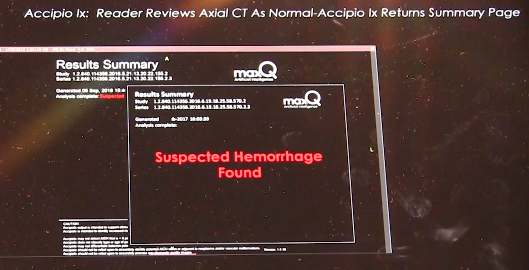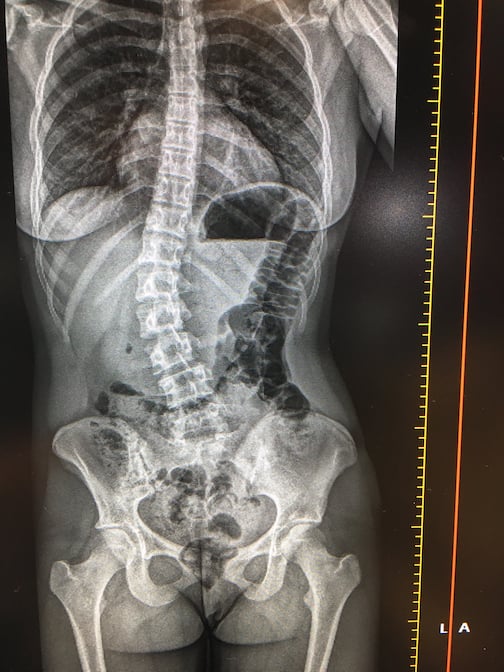Interview with Geoffrey Rose, M.D., president of Sanger Heart and Vascular Institute with Atrium Health, in Charlotte, North Carolina, and a board member with the American Society of Echocardiography (ASE). He explains the impact if COVID-19 (SARS-CoV-2) on the cardiovascular service line and cardiac imaging. He said the virus has led to use of computed tomography (CT) not only as the frontline cardiovascular imaging modality to evaluate chest pain, but also for COVID-19 pneumonia imaging.
Rose said cardiac ultrasound is still used, but requires full personal protective equipment (PPE) and often abbreviated exams because of the close proximity of the sonographer and patient when performing echocardiograms. This has given rise to using dedicated point-of-care ultrasound (POCUS) systems to answer specific clinical questions quickly. Smart-phone based POCUS systems that use an app and a transducer plugged into the phone enable basic echo exams or evaluation of other parts of the anatomy quickly without the need to immediately sterilize an entire cart-based ultrasound system. These small systems also can be completely enclosed inside a transducer sheath and the phone and single transducer are much easier and faster to wipe down. He said the quality of the exams are not as good as fully enabled echocardiography systems, but it allows for quick assessments of ejection fractions and to triage if the patient needs more advanced imaging if the basic questions cannot be answered.
Since hospitals have shut down now for about two months, postponing normal checkups, and elective exams and procedures, Rose said doctors still need to visit with patients who have chronic conditions. Sanger and Atrium Heath modified its ambulatory electronic medical record (EMR) and is using video conferencing to perform virtual appointments now for the majority of these patients. He said telemedicine was not widely used before COVID-19 in his hospital system, but the pandemic will likely alter the care model for the future, with more telemedicine visits being used even after epidemic is over. He said use of POCUS and CT as frontline cardiac imaging modalities will also likely remain in place after the pandemic because of the efficiencies in care these technologies offer.
Related Coronavirus Content:
VIDEO: Imaging COVID-19 With Point-of-Care Ultrasound (POCUS)
Cardiac Imaging Best Practices During the COVID-19 Pandemic
RSNA Publishes COVID-19 Best Practices for Radiology Departments
ASE Guidelines for the Protection of Echocardiography Providers During the COVID-19 Outbreak
New CT Scoring Criteria for Timely Diagnosis, Treatment of Coronavirus Disease
FDA Issues New Policy for Imaging Systems During COVID-19
VIDEO: COVID-19 Precautions for Cardiac Imaging — Interview with Stephen Bloom, M.D.
A Review of Studies Cautions Against Chest CT for Coronavirus Diagnosis
New Research Finds Chest X-ray Not Reliable Diagnostic Tool for COVID-19
VIDEO: Radiology Industry Responding to COVID-19
University of Washington Issues Radiology Policies for COVID-19
VIDEO: Best Practices for Nuclear Cardiology During the COVID-19 Pandemic — Interview with Hicham Skali, M.D.
New Research Highlights Blood Clot Dangers of COVID-19
Survey Reveals Most Medical Practices are Now Using Telehealth Due to COVID-19
CMS Offers Recommendations on Reopening Healthcare in Areas of Low COVID-19 Cases
CT Provides Best Diagnosis for Novel Coronavirus (COVID-19)
Radiology Lessons for Coronavirus From the SARS and MERS Epidemics
Radiologists Describe Coronavirus CT Imaging Features
CT Imaging of the 2019 Novel Coronavirus (2019-nCoV) Pneumonia
ACC COVID-19 recommendations for the cardiovascular care team
VIDEO: What Cardiologists Need to Know about COVID-19 — Interview with Thomas Maddox, M.D.

























 The software also offers a second set of eyes for more difficult to detect cases. Quickly determining is a stroke is ischemic or hemorrhagic is critical to the path of treatment. If caught early enough, TPA can be injected into patients to clear clots causing an ischemic stroke, but can cause massive brain damage or death if injected into a patient with a brain bleed. At advanced neuro-interventional centers, quickly determining the type of stroke is needed to know if they need to revascularize a patient or manage a hemorrhage.
The software also offers a second set of eyes for more difficult to detect cases. Quickly determining is a stroke is ischemic or hemorrhagic is critical to the path of treatment. If caught early enough, TPA can be injected into patients to clear clots causing an ischemic stroke, but can cause massive brain damage or death if injected into a patient with a brain bleed. At advanced neuro-interventional centers, quickly determining the type of stroke is needed to know if they need to revascularize a patient or manage a hemorrhage. 
 This is a demo of the EOS orthopedic X-ray imaging system at the recent 2019
This is a demo of the EOS orthopedic X-ray imaging system at the recent 2019 











